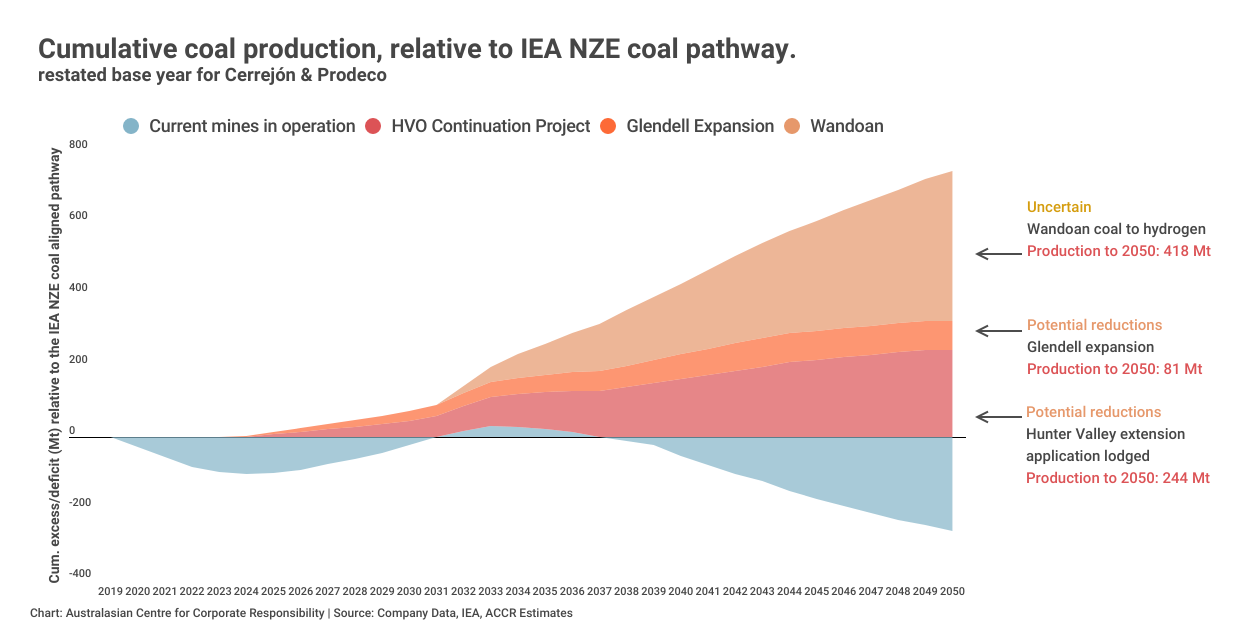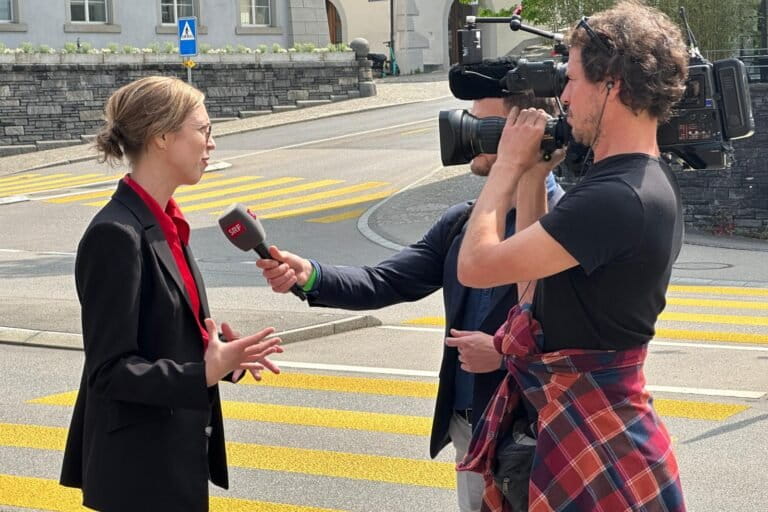- Swiss-based mining giant Glencore says it plans to challenge the proposed listing of a heritage site, the Ravensworth Homestead, that could deter the planned expansion of its Glendell coal mine.
- Glencore, the largest coal producer in Australia, faces criticism from shareholders for its lack of transparency on how it plans to meet its climate targets, especially in light of proposed thermal coal mine expansions in the country.
- Listing the homestead, which is a culturally significant site for the Indigenous Wonnarua people, is now being reconsidered by heritage officials after a process that sources say has dragged on.
- The Glendell mine is one of several that could increase their emissions under a loophole in the government’s revised “safeguard mechanism” that’s intended to bind the mining sector to a reduction in emissions.
SYDNEY — In October last year, an Australian development planning body rejected Swiss-based mining giant Glencore’s proposed coal mine expansion on land connected to a significant massacre site for the Indigenous Wonnarua people of Australia’s Hunter Valley.
The project “is not in the public interest despite its likely benefits,” the Independent Planning Commission (IPC) of the state of New South Wales said in a media release rejecting Glencore’s application to expand.
The expansion would potentially relocate the Ravensworth Homestead — where Indigenous sources say an army lieutenant, Nathaniel Lowe, was arrested for massacring native prisoners on the property in the 19th century — to another location. This would have significant, irreversible and unjustified impacts on the historic heritage values of the Ravensworth Homestead complex, said the IPC.
“It is part of Aboriginal lore that everyone, Indigenous and non-Indigenous, should work together to ensure that we look after the land for future generations to come,” Scott Franks and Robert Lester, representatives of the Plains Clan of the Wonnarua people, wrote in an open letter.
It was a brief moment of relief for the Wonnarua people and a slight setback for Glencore, the largest coal producer in Australia. But the mining giant says it intends to continue pushing for the expansion, as the final checkmark to protect the Ravensworth Homestead — the receipt of a heritage listing — drags on more than a year later.

This expansion is a part of a bold push for more mining that shareholders are not being made aware of, investors told Mongabay. At the same time, shareholders say they fear the major coal producer has no real plans to reduce its emissions.
Today, Glencore owns the land on which the Ravensworth Complex sits. The homestead, owned by the company for more than 26 years, is in an area where the company seeks to mine an additional 135 million metric tons of thermal coal for the next 21 years. Thermal coal, used to generate cheap electricity worldwide, is one of Glencore’s main assets. According to the Swiss group, the mine extension could potentially create 690 more jobs and bring in A$282 million ($183 million) in royalty revenue to the NSW government.
Shareholders in the dark
But Naomi Hogan, company strategy lead for the Australasian Centre for Corporate Responsibility (ACCR), said Glencore’s recent actions don’t match its own statements to shareholders on reducing emissions.
“ACCR has major concerns that Glencore is not acting in line with the comments that they’ve made internationally to investors around running down coal mines responsibly,” she said.
At the company’s annual general meeting earlier this year, more than 29% of shareholders voted in favor of a resolution for more information from the company on how it’s taking action to reduce emissions and meet climate targets. Thirty percent of shareholders also voted against its currently stated climate plan. It was one of the highest votes against a corporate climate plan internationally, according to Hogan.

Glencore didn’t respond to questions from Mongabay, but referred to information on its website.
The company is committed to responsibly managing the decline of its portfolio in line with its emissions reduction targets, according to a statement on its website. This includes a 15% reduction by the end of 2026 and a 50% reduction of emissions by the end of 2035 against a 2019 baseline. Glencore also states it has a longer-term ambition of achieving net-zero emissions by the end of 2050.
But there’s not enough clear information from the company on how it’s actually going to achieve those targets, particularly when it comes to thermal coal, Hogan told Mongabay.
Ninety percent of Glencore’s indirect emissions along its value chain come from its thermal coal business. Yet investors say they’re not seeing a decline in that coal business in line with what the Paris Agreement, a global accord to reduce carbon emissions, calls for.
When the ACCR analyzed publicly available data from Glencore’s planned coal production against its Paris climate targets, it found no alignment.

“[W]hat we can see is if Glencore proceeds with all of its expansions in Australia — including that Glendell expansion — that will be moving it further and further away from Paris alignment, particularly when we look at the cumulative emissions over time, we see that it’s going way off track,” Hogan said.
Among those who voted against Glencore’s climate plan was BlackRock, the world’s largest investment manager. This triggered a legal obligation for Glencore to consult shareholders on the reasons behind their vote under the Corporate Governance Code of the U.K., where the company is listed. It has until late November to complete this consultation.
Hogan said she’s heard from investors who have been contacted by Glencore, but added, “I think it’s highly relevant to those investors that, while Glencore is doing that outreach here in Australia, it is still actively pursuing coal expansion, both this project [the Glendell mine] and, and several others through the regulations, and planning pipeline here.”
Other mines that the ACCR says Glencore is seeking to expand include Hunter Valley Operations in NSW, the Rolleston Open Cut in Queensland state, and the Ulan Coal Mine Complex in NSW.
“These are updates that investors are not getting from the company. They’re not giving out this level of disclosure,” Hogan said.
The ACCR says it’s concerned that the money spent on expanding coal mines in Australia could be better invested on Glencore’s transition metals business or other aspects of the business. And at the moment, Hogan said, investors haven’t really had enough oversight of those decisions.
What about using coal to make steel in renewable energy infrastructure projects? Glencore’s recent bid to purchase Teck Resources’ steelmaking coal unit (coking coal) doesn’t do anything to quell the climate concerns of investors, says the ACCR. “Risks are only increasing for both thermal and metallurgical coal. If the sale goes through, Glencore’s coal portfolio will still be around 75% thermal coal.”

Glencore’s production isn’t projected to begin declining until over 10 years from now, years past its stated targets, according to the ACCR’s calculations. For the next 10 years, which are critical for climate action, production is flatlining.
Even without an expansion or relocating the Ravensworth Homestead, the Glendell mine is one of several open-cut coal mines that could actually increase its emissions due to a loophole under the Australian government’s recent revision to its “safeguard mechanism” legislation. Formally aimed at reducing carbon emissions from industrial facilities, the mechanism calls for a 4.9% annual decline rate per mine against the industrywide average. And because some mines emit less carbon than the industry average, others, like the Glendell mine, could be allowed to increase emissions.
A muddled heritage listing process
At the moment, the heritage assessment and listing process for the Ravensworth Homestead, which could potentially deter Glencore’s coal mine expansion, is locked in a bureaucratic tangle. The process has spanned the terms of two Australian prime ministers, has taken years, and is confusing, advocacy groups tell Mongabay.
This week, the Heritage Council, a heritage listing body, just reconsidered its initial recommendation to list the homestead due to a “clerical error” in not considering all opinions about the listing. The council didn’t immediately respond to Mongabay’s questions about its reconsideration.
While Glencore didn’t state how it planned to fight the proposed heritage listing, as a landowner impacted by the decision the company can make a submission during this process. It could also argue that a listing will impact jobs and create unfair economic impacts on its coal business, said Nic Clyde, the NSW coordinator for Lock the Gate Alliance, a community action group. These are two considerations the minister of heritage takes into account before accepting or declining a listing recommendation from the Heritage Council.
If a heritage listing goes through, it would also make Glencore financially responsible for maintaining the homestead as the owner of the property.
The mining company previously told the Sydney Morning Herald that the best way to preserve the site is to relocate and renovate it. However, according to the IPC, relocation could harm the homestead, which has fallen into disrepair under Glencore’s ownership, said Georgina Woods, head of research and investigations at Lock the Gate Alliance.

According to the Heritage Act, the minister should have made a decision on the Ravensworth Homestead months ago. Once the Heritage Council made its initial recommendation on April 14, the minister had 14 days to decide. But that didn’t happen. The Heritage Council made a recommendation and it’s not clear if anyone received it. According to a spokesperson for Heritage NSW, a state body, it’s the job of this institution to prepare “a brief” and send it to the minister to support her decision. However, this isn’t mentioned in the act.
“[W]e were expecting Heritage NSW to lodge a decision brief with the Minister for Heritage — Penny Sharpe — 5 months ago, but it appears that still hasn’t happened,” Clyde said in an email. Multiple other sources expressed concern about the length of time this process has taken.
“[A]s late as last week, we’ve now gone back to New South Wales Heritage and said, what is going on here?” Franks, the Wonnarua representative, said about his meeting with the environment minister on Oct. 15.
A Heritage NSW legal representative told Mongabay in an email that the listing of Ravensworth Homestead “is the subject of a legal process and it is not appropriate to comment.” And the minister’s office asserted “no recommendation on [Ravensworth’s] Heritage listing has been made to the Minister yet.”
According to a report by the office of the NSW state auditor, the median length of time it takes Heritage NSW to process a listing is two years. “Heritage NSW does not have adequate oversight of state significant heritage assets, presenting risks to its ability to promote the objects of the Heritage Act,” the report reads.
Heritage listing or not, Glencore’s shareholders say they’ve made it clear they expect more evidence of how the company intends to meet its climate targets in light of all its proposed coal mine expansion plans. “Glencore must recognize that neither the risks of its thermal coal business nor the concerns of investors are going away,” Hogan said.
Banner Image: Protesters were accompanied by artist Doug Heslop, who displayed his original artwork, ‘Wonnarua Massacre, 1826’ in solidarity with the Wonnarua people. A framed copy of this artwork was given to Tanya Plibersek. Photo by Nic Clyde at Lock the Gate Alliance.
Mike DiGirolamo is Mongabay’s audience engagement associate. Find him on LinkedIn, Bluesky, Instagram, TikTok and Mastodon.
Australia crackdown on climate protesters grows amid fight against gas project
FEEDBACK: Use this form to send a message to the author of this post. If you want to post a public comment, you can do that at the bottom of the page.














